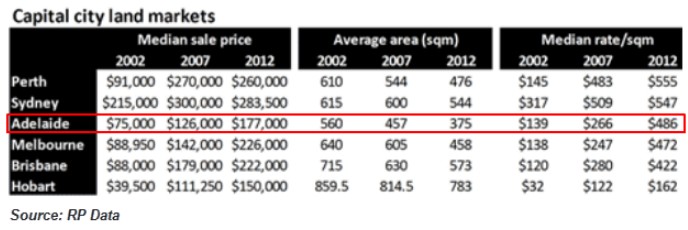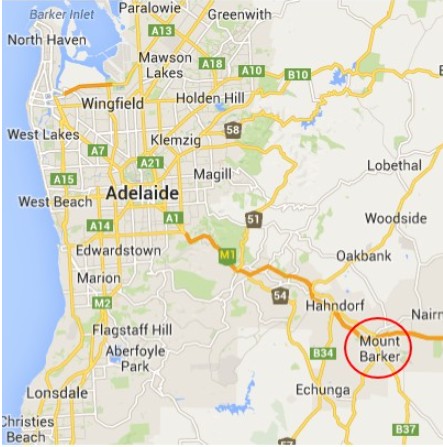
South Australian planning minister, John Rau, has announced that he wants to more than double Adelaide’s CBD population within a decade, as well as house another one million people in the existing urban footprint. From News.com:
“If we had the same density as is in North Adelaide through the existing footprint of the city, we could probably absorb another million people or something,” he said…
“I think within the next 10 to 15 years we should aim for 50,000 in the city, maybe even that is a little modest and we could push that harder,” he said…
“People need to recall that 100 years ago, twice as many people were living in the City of Adelaide as live here now. We had over 44,000 people living in the City of Adelaide. We are now just creeping back up to 22,000 or 23,000, having been down as low as 11,000.
“If we cannot get 50,000-odd people into the space that used to have 44,000 in 1914, well, I think we are not setting ourselves much in the way of targets.”
I have no issue with rezoning CBD areas to encourage more intensive housing. As a Melbournian, I am very proud of how the CBD has transformed itself over the past 20 years from a desolate work-only prescient to a thriving 24-hour city. And I cannot blame Adelaide from wanting to follow in Melbourne’s footsteps.
What I do take issue with, however, is the way in which the South Australian Government’s CBD fetish has coincided with a war on “sprawl”, which has dramatically forced-up the cost of new housing in Adelaide.
In 2002, the Government implemented an urban growth boundary (since renamed the ‘urban footprint’). It has also set a target for 70% of new housing to be provided within the pre-existing urban area, as well as operating a cumbersome development approvals system, whereby Productivity Commission estimates that it takes between 2 to 13 years to complete the land supply process.
Indeed, the planning minister, has previously articulated the Government’s opposition to sprawl with the following quote:
“Whatever the policy of individual industry groups may be regarding the urban growth boundary, the government position is clear. We do not speak for industry. Urban sprawl cannot continue… Subdivision of green fields sites will occur only when required to maintain an adequate stock of rezoned land and only when structure plans and infrastructure requirements have been addressed. A priority is quality urban regeneration.”
The end result of these policies is that average Adelaide vacant lots are the smallest in the nation and the third most expensive on a rate per square metre basis, having risen by 250% in the decade to 2012 (see below table). This cost escalation comes despite Adelaide being an economic backwater and experiencing relatively moderate population growth.

Moreover, the attempted urban containment has encouraged far flung “leapfrog development” into places like Mount Barker, thus arguably accentuating sprawl (see below map).

Urban regeneration is a worthwhile goal. However, it should not be achieved by limiting housing choice and effectively forcing people into apartments (or far flung developments) by artificially restricting land supply and forcing up its cost.

